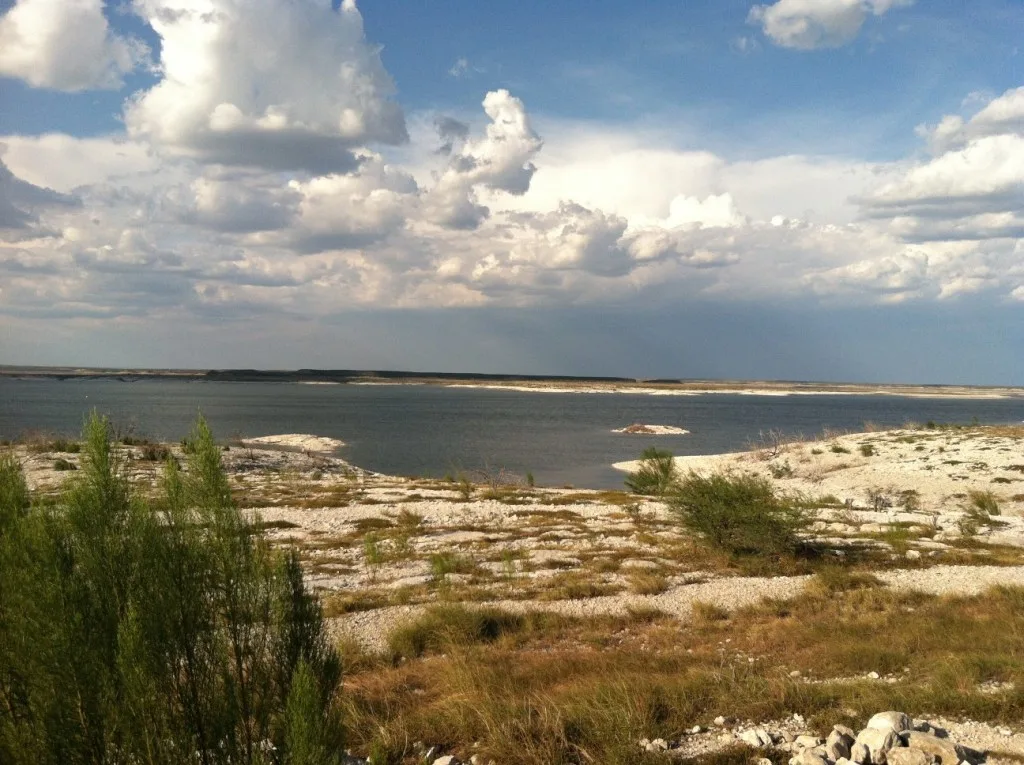With a name like Amistad, it’s easy to see why so many tourists flock to the shores of this “friendly” reservoir where Texas and Mexico meet. Amistad means friendship in Spanish, and the Amistad National Recreation Area lives up to its name.
The United States and Mexico celebrate their friendship with the International Bridge, and the Amistad National Recreation Area is a unique spot for exploration on land and by water. We’ll explore more about this location and whether it’s worth a visit.
Let’s get started!
What Is Amistad National Recreation Area?
The Amistad Reservoir dates to 1969 and is on the southwestern border of Texas and the Mexican state of Coahuila. The Rio Grande, Pecos, and Devils Rivers fill the reservoir and cover 64,900 acres. It has transparent waters from its karst foundation.
The lake’s bedrock is limestone with many sinkholes and caves, and although it lies in a desert climate, Amistad has more moisture than most oases. Water levels change drastically, and plants have adapted to rocky soil. Even the winds behave differently, coming from the Gulf of Mexico in the southeast.
Is Amistad National Recreation Area in Texas Safe?
Lake Amistad is in a rural area with few residents. However, with its position on the international border, the local law enforcement forces and border patrol work with heightened awareness. There have been no problems with crime or border violence affecting the lake, and the reservoir is safe.
The closest town, Del Rio, Texas, boasts a minimal crime rate!

Can You Swim in Lake Amistad?
Visitors to Lake Amistad can swim virtually anywhere in this vast lake, except near marinas where boats and fishing hooks could cause injury. With year-round water temperatures from 56 to 86 degrees, jumping into the water is an excellent way to cool off. However, that’s not the only activity that this recreation area offers. Amistad has five primitive campgrounds, several hiking trails, boating and fishing opportunities, and birdwatching activities.
Two of the most popular outings are a guided walking tour or a boat tour of the many prehistoric Native American pictographs found on cave walls in the area. Parida Cave, or Painted Caves Station, has archaeological findings dating over 5,000 years.
How Deep Is the Amistad Reservoir?
At most, Lake Amistad is 217 feet deep. With its clear waters, the reservoir is a popular destination for SCUBA diving. The Diablo East section is one of seven designated dive coves requiring dive flag usage. Many divers enjoy skirting in and out of the numerous underwater caves.
Experts strongly suggest that all divers have training and experience before exploring this region, as the required skill levels are intermediate to advanced.
What Kind of Fish Are in Amistad Reservoir?
With so much surface area and a temperate climate, fishers arrive year-round to reel in bass, including Guadalupe, White, Striped, Largemouth, and Smallmouth bass. Channel catfish, Blue catfish, and Bluegill are also common catches. Black and White crappie are abundant, as are several gars, including Alligator and Spotted.
Pro Tip: Use these tips on How to Get a Texas Fishing License if you want to fish in the Amistad Reservoir.

What Was the Last Time Lake Amistad Was Full?
Amistad Reservoir is full when it reaches 1117 feet above sea level. Considering the bottom of the lake is 900 feet above sea level, that means Amistad would be complete at 217 feet of depth. The last time the lake was at the “conservation pool” level was in 2011, but by 2013 its waters had dropped to the lowest in recorded history.
That measurement was 1055 feet above sea level, and today it is precariously close to that record at 1058 feet above sea level. When at capacity, the lake is the second largest in Texas, next to Toledo Bend Reservoir on the Texas-Louisiana border.
Pro Tip: Check out these 7 Best Small Towns in Texas (And Awesome Nearby Campsites) after exploring the Amistad National Recreation Area.
Is There a Town Under Lake Amistad?
Devil’s River, Texas, began as a railroad town in 1882. It had about 50 to 60 residents, and the founders built it to service the Galveston, Harrisburg, and San Antonio Railway. The settlement lay near the Mexican border and had 20 families residing there in the 1940s.
When officials made plans to flood the valley, the residents had to go elsewhere as they built Amistad Dam, and the lake began filling in 1969. Devil’s River now lies at the bottom of the lake, a landmark for SCUBA divers to explore.
Is Amistad National Recreation Area in Texas Worth Visiting?
Even at lower water levels, Amistad National Recreation Area attracts many outdoor enthusiasts for fishing, swimming, and boating. History buffs explore over 4,000 pictographs on the walls of caves above and beneath the lake’s waters.
Its pristine depths are a draw to SCUBA divers from around the world. With a high degree of safety, Lake Amistad is an ideal Southwest Texas getaway for the whole family.
Will you visit Amistad on your next adventure? What are your favorite lakes to explore in Texas? Tell us in the comments!
Discover the Best Free Camping Across the USA
To be honest with you, we hate paying for camping. There are so many free campsites in America (with complete privacy).
You should give it a try!
As a matter of fact, these free campsites are yours. Every time you pay federal taxes, you’re contributing to these lands.
Become a FREE CAMPING INSIDER and join the 100,000 campers that love to score the best site!
We’ll send you the 50 Best Free Campsites in the USA (one per state). Access the list by submitting your email below: